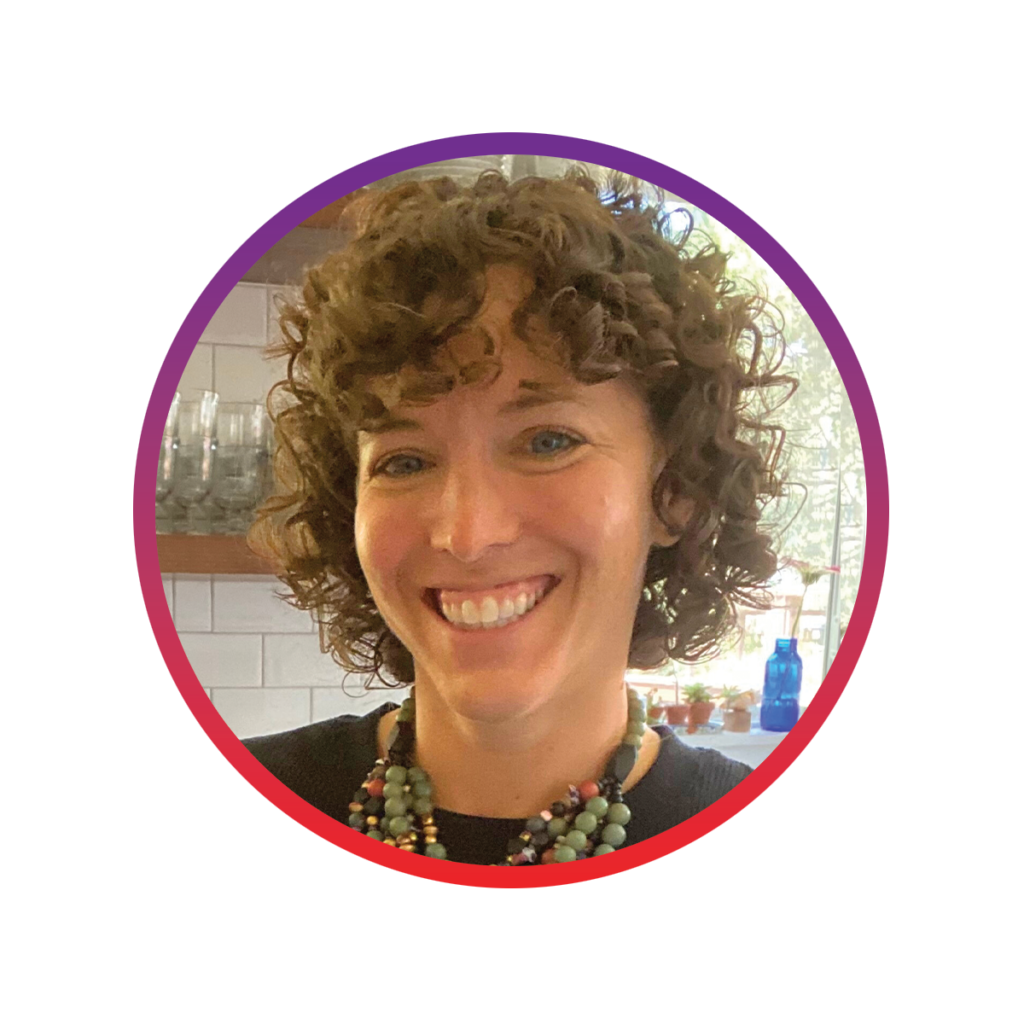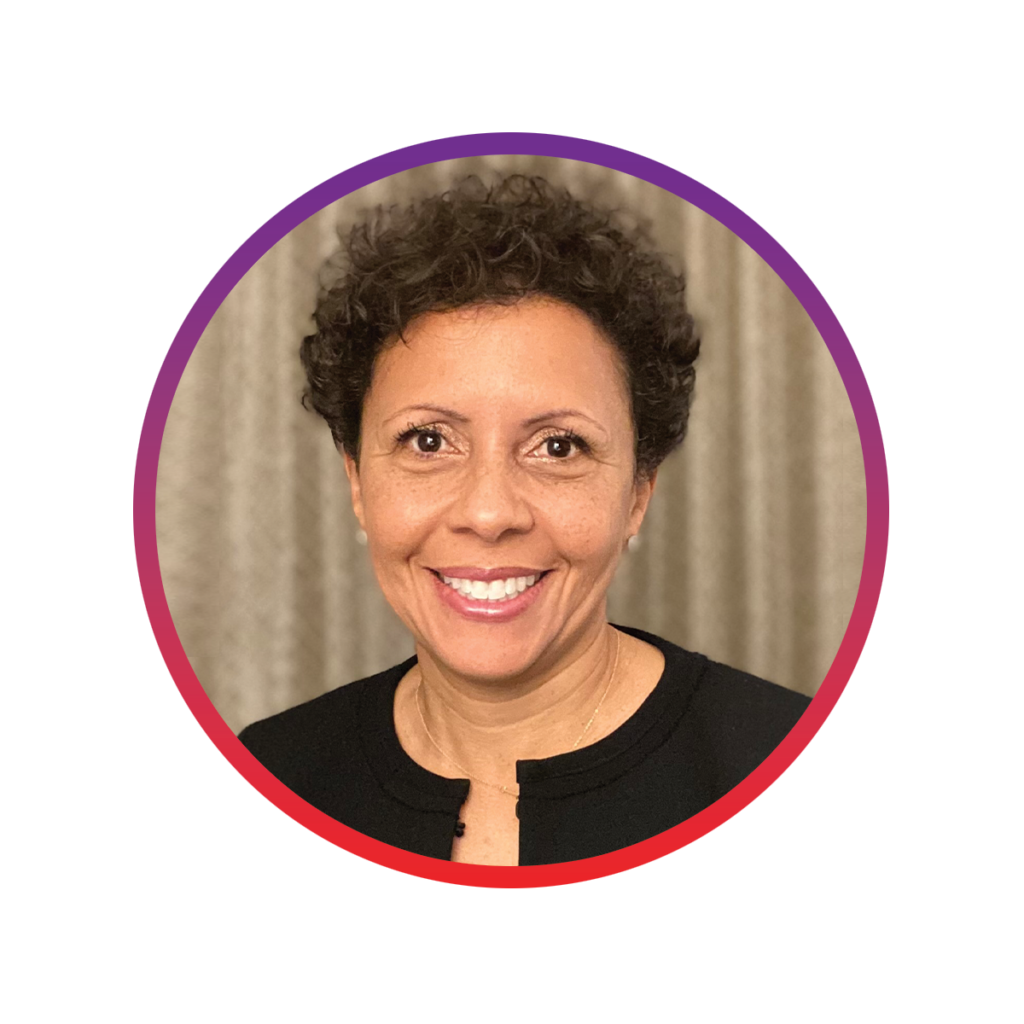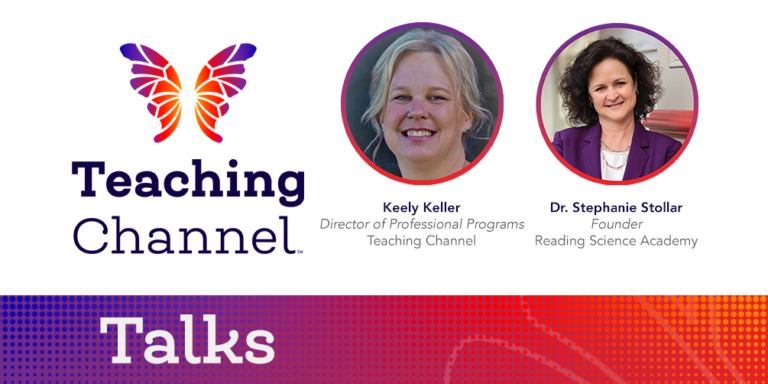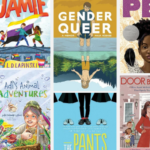In this episode of Teaching Channel Talks, our host Dr. Wendy Amato discusses the importance of literacy and reading with Robin Rubenstein, Director of Curriculum and Implementation. This conversation centers around K12 Coalition’s Red Thread literacy curriculum, a K-8 program designed to integrate the science of reading into everyday instruction and to address gaps in existing literacy education materials. In this discussion, Robin and Wendy cover the foundational components of the Red Thread program, the creation process of decodable texts, the significance of explicit instruction in reading strategies, and the ongoing professional learning support provided to educators.
Our Guest

Robin Rubenstein is the Director of Curriculum & Implementation at Lavinia Group, a part of K12 Coalition. As an elementary literacy and mathematics expert, Robin is responsible for the design and development of Lavinia Group’s foundations and knowledge-building, research-based elementary literacy curriculum. Previously, Robin worked as a special education teacher, instructional coach, head of curriculum, and elementary school principal. During her time as an educator, she has led and nurtured the implementation of progressive and transformative education through deeper learning principles, improvement science methodologies, and equity practices. Robin received her bachelor’s degree from the University of Arizona’s School of Education, a master’s degree in Special Education with a focus in Learning Disabilities from Hunter College in New York City, and a master’s degree in School Leadership from the High Tech High Graduate School of Education.
Our Host

Dr. Wendy Amato is the Chief Academic Officer at Teaching Channel’s parent company, K12 Coalition. Wendy earned her Master’s in Education and Ph.D. in Curriculum and Instruction from the University of Virginia. She holds an MBA from James Madison University. Wendy began teaching in 1991, has served as a Middle School Administrator, and still teaches at UVA’s School of Education. She has delivered teacher professional development workshops and student leadership workshops in the US and internationally. Wendy and her family live near Charlottesville, Virginia.
Resources for Continued Learning
This episode focuses on K12 Coalition’s RedThread literacy program, a holistic reading program that’s redefining literacy education. Learn more about how you can bring RedThread to your school.
K12 Coalition is offering a free resources so you can try our the RedThread literacy program in your classroom including a sample lesson plan, student workbook, and decodable book. Download your free samples of the RedThread Foundations Curriculum and experience the difference firsthand!
During the episode, Robin and Wendy reference an NYU study on the RedThread Foundations program. You can read the full comparative study on the RedThread website.
Episode Transcript
Dr. Wendy Amato: Welcome to Teaching Channel Talks. I’m your host, Wendy Amato, and as often as I can, I jump into conversations that impact student learning. The education community is certainly all about the science of reading. So in this episode, we’ll explore a wonderful program that’s engineered to accelerate literacy.
It’s my pleasure to welcome Robin Rubenstein, Director of Curriculum and Implementation. Robin, welcome to the podcast.
Robin Rubenstein: Hi, Wendy. Thanks so much for having me. I’m really excited to be here today to talk about literacy and curriculum and science of reading, all things that I am so passionate about.
Dr. Wendy Amato: I’m glad you’re here.
Tell me a little bit about why it’s important to you to teach reading.
Robin Rubenstein: I really believe that reading is the foundation to really being able to access the world and especially, to be able to engage in really deep learning. And so I think that students who might struggle with learning to read, you can see that their confidence really just takes a hit in being able to even just share their ideas with others.
To be able to feel like they can read and understand other people’s ideas, and also just really to enjoy the beauty of literacy and reading. And so I think it’s really important that we are really early on setting that foundation for early reading, really building the confidence and joy in our youngest readers.
And understanding that they can experience the world in so many different ways and that literacy can really help them to access that.
Dr. Wendy Amato: I agree with you. Literacy and reading opens the doors to everything. This is about all content areas. All interests and all humans. We have a responsibility in education to make sure that all of our students are reading.
I’m grateful to you for your expertise. Tell me about this program, Red Thread.
Robin Rubenstein: Yes, so I’m really excited to talk in particular about our Red Thread literacy curriculum. At K 12 Coalition, we have been spending a lot of time working with educators around the country.
And within our teams to really study the science of reading, to really help our teachers and leaders and schools to be able to really infuse that into the work that they’re doing every day with students. And we have found that a lot of curriculum really are lacking some of those really important pieces of science of reading, or really focus on just one area of the science of reading.
And schools are really left to figure out how to supplement and fill the gaps that kind of come up throughout the day, throughout the year, to really ensure that students are getting a cohesive and really deep literacy education and instruction. Red
Dr. Wendy Amato: Thread is a K 8 program. How do you distinguish early literacy from higher grades?
Robin Rubenstein: So Red Thread Curriculum is really designed to address two major components of the science of reading. We have curriculum that really focus on foundational reading skills in both our K 2 and in our grades 3 through 5. And then we also have a knowledge building component of the curriculum that really engages students in High interest, complex grade level text that is just multicultural.
It’s just they’re really just beautiful, authentic texts that students are really engaging in deeply understanding and analyzing the text. They’re also engaging in really rich projects. And that is for our kinder through eighth grade students.
Dr. Wendy Amato: So we have Red Thread Knowledge and then Red Thread Foundation.
There are also decodables, right?
Robin Rubenstein: Yes. As part of our foundational curriculum in our kinder through second grade, students have the opportunity to read decodable texts that are controlled and align with the scope and sequence of explicit instruction that they’re engaging with every day. And they’re able to have two decodables each week that really align with that focus for each week.
And one of those gets to go home with them at the end of the week, which we’re really excited to be able to offer that as a communication tool with families and also a way to just infuse joy and learning at home as well.
Dr. Wendy Amato: Now you’re warming this old teacher’s heart because I love a traditional hard copy book and knowing that Red Thread is providing those for students to enjoy at home with their families, that is really a treasure.
And the decodables, tell me, these decodables were built for the program. It’s not that you tried to force a program around existing books. How was that creation process?
Robin Rubenstein: Exactly. It was really I think born out of, again, just This necessity and need that we were finding as we were working with teachers in school, and even going back to my early days as a teacher, my background is more in special education.
And so I frequently would be using a curriculum for students and then they would go back to their classroom. And be reading kind of grade level texts that didn’t have any of the skills and concepts that we were just practicing. And so I found myself writing controlled texts and passages. I found myself scouring the world to find more controlled texts that students could read independently.
And really be able to practice those decoding skills that we were working on in our classroom together. And so we were finding that was also something that was missing in many classrooms. A lot of times we didn’t see any decodable text that were being used or decodable text. That teachers were using did not align with the phonics skills that they were teaching.
And so there really wasn’t this opportunity for students to really apply and try out and feel independent and confident in their, in reading those texts. So not only are decodables aligned with the phonics skills and concepts that we’re explicitly teaching. But what we are really excited about also is that they are aligned with the knowledge building concepts that students are really deeply engaging with in our knowledge building curriculum.
And so it’s really been exciting to see. Students be able to independently read even in our, kinder, first and second grade classrooms about these really complex ideas such as community problem solving, space exploration, civil rights movements, that they’re actually reading controlled decodable text about those topics make it so much more meaningful and engaging for students as well.
Dr. Wendy Amato: My favorite of the decodables is zip to the top. I also have a soft spot for a mug for pop and pug. Do you have a favorite?
Robin Rubenstein: Oh my goodness. I’ve been asked that question so many times and I honestly don’t think I can pick just one. I think every time I talk about our books, I pick a different one. I really love our first grade unit that they do at the beginning of the year that really focuses on community problem solving and really studying just what is a problem?
What, how do we solve our individual problems? How do we work together as a community to solve larger problems? And so one of the books in particular in that series is called duck in the muck. That is about a little girl and her mother who find a duck that is in an oil spill and is, not doing well is It needs to be helped and saved.
And so she and her mother rescued this duck and also then involve other people in the community. And so one of the really amazing parts of the decodable book is they don’t just stop at that storyline either. They also provide this building background section where teachers read aloud to students more about this concept.
And so in this book, students are also reading about. Oil spills and what an oil spill is and how it is definitely not a problem that just one person on their own can solve. And it really needs the larger community to come together to solve. And so I think just those two pieces together, I think really just make that a beautiful book.
I also think there’s a lot of just real world connections. My own daughter one day was You know, a commercial came on, and it was for Dawn’s Soap, and it was about, you see this duck getting washed off in the sink with this soap, and she knows the text, and was really excited to even see that connection to the book that she had been reading, and how that problem came about.
in the real world is actually being solved as well.
Dr. Wendy Amato: This is a perfect pairing. We get the academics and we get the individual connections for our learners. What more could we ask for in teaching reading? Red Thread is designed to accelerate literacy. What are some of the accelerating ingredients in it?
Robin Rubenstein: A few of the really important ingredients that are included in Red Thread curriculum, in particular, we call these our core tenets. Our structured literacy practices, culturally responsive teaching and learning, explicit writing instruction, and project based learning. And so just even thinking about that very first core tenet, that structured literacy piece, throughout both Red Thread Foundations and Red Thread Knowledge, we are really infusing a lot of those signs of reading practices, and really in particular focusing on Word recognition skills, such as phonemic awareness, decoding, and sight word recognition.
And we’re also infusing a lot of those practices around structured literacy to really ensure that students are getting a lot of real time feedback in their learning. Teachers are using that formative data to really personalize the work for students as well as we go. And really making sure that the instruction, both in the foundations curriculum and in the knowledge curriculum, is very explicit for students as well.
So everything throughout the curriculum is explicitly taught and modeled, and then students also have an opportunity to engage in that work together and then independently throughout the lessons.
Dr. Wendy Amato: We know that Nearly half of the states across the U. S. are using red thread, and of course it’s growing. I expect red thread to be a household word before long.
There’s a lot of support for what we are understanding about teaching reading now. There’s a significant NYU study, some research that I’ll make sure we included the show notes here. Tell me a little bit about why you feel this is particularly effective, especially when we compare with. Old school reading strategies.
Robin Rubenstein: Yes. Yes. We’re so fortunate to be able to have partnered with NYU this fall, and to be able to really take a moment to study the curriculum and to get some feedback on how it’s being implemented and how it’s working with students in the classroom. And so it was really exciting to see, even within, you this six week pilot that students were really able to make tremendous gains in both individual kind of phonics skills and concept, like letter, name, and sound being able.
To blend and segment words and sounds. But in particular, what was really exciting to see, and I think very different than some other curriculum that is being used out there was how students were able to then take those isolated skills and concepts that they show growth in, but apply those. In reading a connected text like a decodable where they’re able to really deeply understand the text.
So not only read accurately, but really are able to deeply understand the text. And we really do believe that’s because our approach is focused on both of those areas. And so that was really exciting to see.
Dr. Wendy Amato: The evidence is there, so it is exciting to see, and people need to have that evidence because we’re accountable for the way the funds are spent in our programs and for the impact that we’re making on the children in our care.
Robin Rubenstein: I think schools are also really drawn to wanting to have a curriculum that really puts all the pieces together as well, and so I think Having both a curriculum that focuses on foundations and knowledge together in a really rich and deep way is something that a lot of schools and teachers are really looking for that is also aligned to the science of reading.
And so I think that’s one, not only beyond the results, it really just is a very exciting and enjoyable curriculum to teach when you look at the concepts and topics that students are going to be reading about and engaging in conversation around. And engaging in project work that they’re then sharing back with an authentic audience in their schools and their community.
It really is a really just intellectually engaging curriculum for both students and teachers and their families as well.
Dr. Wendy Amato: When we talk about teachers, it makes me think about professional learning. I know that you personally instruct in professional learning. You’re out there in the schools working with educators.
What is that support like, and why is it meaningful to have year long professional learning around literacy?
Robin Rubenstein: At K 12 Coalition, we really pride ourselves in our professional learning communities, in our ongoing support within our schools and classrooms, both at high levels with leaders and districts, but also in the classroom side by side with teachers.
We believe that it is one of the most important things that we can do for our students. Partners and for students in general is to really ensure that we are working together as a team to really ensure that the instruction and the learning that’s happening in the classroom is really just at the highest bar for our students.
And so the professional learning that we provide for red thread is not only initial, initially launching the curriculum and digging into the implementation aspects, but we’re really. Really digging into the research that’s behind the curriculum. We’re talking to teachers and leaders and schools about how the curriculum was designed to support that research.
And then also really how teachers can be understanding the content in a really deep way. And so I think in a lot of my, in my own pre service study in my undergrad days. I honestly did not learn anything about science of reading practices. I learned, some isolated pieces on, phonemic awareness and what is phonics.
But I really did not leave that program with a solid understanding of what that was and how it shows up in our curriculum and practices. And it wasn’t until my master’s study in special education where I really dug deep into that and really learned about all these things in a deeper way. And so I think it is essential that As educators who are teaching these concepts to our students, that we really have a deep understanding of what they are.
And I can tell you every day I learn something new every day, especially with the English language. Every day that we’re analyzing a word I’m learning something new about the structure, about the sounds, about why certain spelling patterns are the way they are. Or about why words are irregular.
Also, there’s so many irregular words. That, make reading challenging as well.
Dr. Wendy Amato: Yeah. English is a difficult language. We become especially aware of that as we have multilingual learners in our classrooms and they may want to apply sound patterns Sound, letter, pairing based on a different language and English is just super special.
Robin Rubenstein: So many different sounds for the same spelling pattern and no rules to go with it. And so really a lot of it is just about trying out different ways and also just reading more and learning what is familiar and what might not sound familiar.
Yeah.
Dr. Wendy Amato: We know in English, we’ve got 26 letters and 44 sounds. 15, 000 syllables, those kinds of things. Other languages may have a see it, say it relationship with letters and sounds. And so we have to be careful in our instruction. There are things that we just can’t take for granted. I think some things were taken for granted in the past, and I’d like to call out some of the ancient practices that we should not be seeing in our classrooms anymore.
Can you help me think about what to watch for? If I’m a parent, a school leader. Or a student and I want to question whether or not I’m receiving a red thread level literacy program.
Robin Rubenstein: I think one of the pitfalls from kind of those ancient practices that we’re talking about is in particular the lack of explicit instruction in these decoding strategies.
particularly in phonics and in encoding and spelling as well. And I know that as a teacher, when I first started and working with students who really were struggling, I was working on those explicit skills, but again, students were not seeing those words or able to try out those words in texts and books that they were reading.
And I found myself teaching students how to use these compensation strategies to guess and just figure out words without paying any attention to the letters and sounds in them. And it just felt so separate and separated from the phonics work that we were doing. And I think that is one of the kind of biggest pieces that we are really working hard as an education community to shift is that.
Reading is not guessing. Reading is not, coming across a word that you don’t know and looking at a picture and moving on. That we have so many more, skills and concepts that we can use to really look at the letters that are in a word. And of course, think about the story. The pictures are there also to help us.
And it’s never our first strategy though to look at those pictures. And I think that’s the one that. Just being in classrooms and schools really is still happening quite a bit out there. And, it’s hard to know where that traces back to. I think potentially it could be a lot of teachers not knowing what skills and concepts they can ask students about in those words.
I think also sometimes it might be that the text that students are reading don’t have those words and concepts in it that they have been explicitly taught to try out. And so I think there’s a couple of. of root causes there that we could unpack more and more, but really ultimately wanting students to know that when we are reading, we are decoding words and we are then putting those words together to make meaning and that the pictures and the text features are there to support and add to our understanding of the text.
But ultimately reading is about, decoding and understanding the words that are on the page.
Dr. Wendy Amato: I like thinking about how we define fluency, that it’s reading words. With accuracy, with correct intonation, and with understanding. That last piece is missing many times. We want students to say the words, but they don’t.
They can’t tell you a thing about what they’ve read. We’re missing that.
Robin Rubenstein: And I have so many favorite parts of the Red Thread Curriculum, but I’m really excited about the fluency lessons that we have incorporated in all of the curriculum. It’s not something that, as a teacher, I ever had a curriculum that explicitly taught students really how to think about prosody, how to think about intonation, how to use the character, motivations or the author’s point of view to really then think about specific words in the text that you want to emphasize or stress or how your voice should sound.
And so I’m really excited that as part of the curriculum we’re also included really explicit instruction and lessons around fluency and what that sounds like.
Dr. Wendy Amato: This is exciting. What might be some of the hardest lessons and how does Red Thread address those? Is fluency complicated?
Robin Rubenstein: I think it can be.
I think my team members are going to laugh when they hear me say this, but I think one of the most challenging things that I have come across is in our second grade and our three through five kind of word analysis and study has been something that’s just been really challenging for me because I did not grow up learning to read in this way.
And my spelling has gotten much better since we have really dug into. To this curriculum and in particular, I think thinking about specific sounds in the English language like schwas and what those are and how you recognize them in words and then in particular, how you recognize those when you’re writing.
When you’re writing words can be really challenging. And again, kind of part of why we really believe it’s important as adults to study the content, to really understand these concepts, because in order to teach them to students, we really need to know really deeply what’s happening in some of these concepts, because they’re really complex and challenging.
As well.
Dr. Wendy Amato: Thank you for that. There are truly hundreds of thousands of students reading now because of Red Thread and because of your work, Robin, thank you for sharing.
Robin Rubenstein: Oh, thank you, Wendy. It was so much fun to have a chance to be with you today and to talk about Red Thread literacy.
Dr. Wendy Amato: To our fellow educators, thank you all for joining this conversation.
If you’d like to explore the topics that Robin and I discussed today, please check out the show notes at teachingchannel. com slash podcast. You might even find a sample lesson available there. And if you wonder what a schwa is, you might want to check those show notes. Be sure to subscribe on whatever listening app you use.
It will help others to find us. I’ll see you again soon for the next episode. Thanks for listening.







